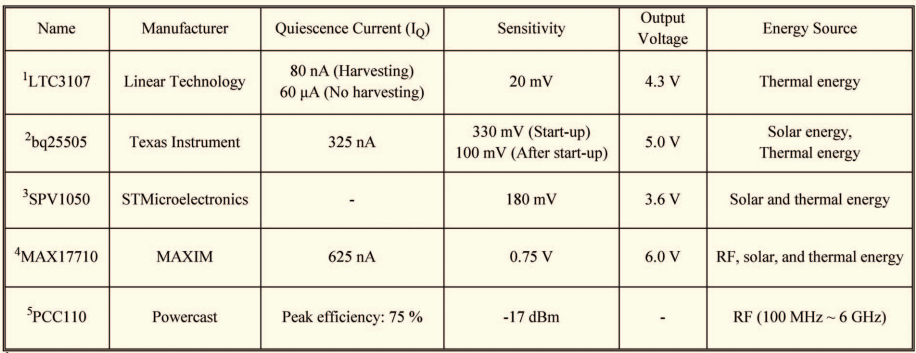Self Sustained Sensor Node for IoT – Technologies and Commercial products !
Batteries are a boon as well as a bane for the IoT world. 20 billion devices mean 20 billion batteries too, how to replace/maintain them? Energy Harvesting is the solution.
The purpose of the post is to understand and solve the problem of “Energy” faced by the booming IoT industry. It is expected that more than 20 billion devices will be connected by 2020. When we have 100-200 devices then replacing batteries is not a big problem but unfortunately, that is not the case with 1 million devices. Most of these devices are required to be placed at inaccessible locations like Nuclear Power Plants, battlefields, forests, underneath bridges, highways etc. In these cases, Energy Harvesting will solve the problem of battery replacement. In the next stage, we will have to replace batteries with super-capacitors.
ENERGY HARVESTING TECHNOLOGIES
Numerous available renewable ambient energy sources exist in nature. Widely utilized ambient energy sources are summarized in Table below.
Solar power is one of the most commonly used sources, featuring high power. It has a high power density of 100 mW/cm2 during daytime with about 30% of conversion efficiency. A solar panel can also operate in a hybrid mode in conjunction with other types of energy source. The available amount of power is determined by the size of a solar panel and various values of voltage or current can be generated by adjusting its size. However, a solar panel requires a relatively large area to collect sufficient amounts of ambient solar power due to the low conversion efficiency of 10%–40%, and its orientation is critical to collect solar power. It is also inefficient on a cloudy day or at night due to the lack of the source.
The thermal energy of the power source is also widely utilized. Electrical power is directly generated by exploiting the temperature difference in thermo-electric devices taking advantage of thermo-electric effects, such as the Seebeck effect or the Thomson effect. In general, a thermo-electric generator produces an energy density of about 20–60 W/cm2 when it utilizes the human body as the heat source at room temperature of 18 degC–25 degC.
The piezoelectric effect generates electrical voltages or currents from mechanical strains, such as vibration or deformation. Typical piezoelectric-based energy harvesters keep creating power when there is a continuous mechanical motion, such as acoustic noises and wind, or they sporadically generate power for intermittent strains, such as human motion (walking, clicking a button, etc.).
Ambient RF energy has a relatively low energy density of 0.2 nW/cm2–1 W/cm2 compared to other energy sources. However, a larger amount of total available power can be harvested by utilizing a high gain antenna. The available or existing ambient energy density of ambient RF and wireless sources keeps increasing due to the ever-expanding wireless communication and broadcasting infrastructures, such as analog/digital TV, AM/FM radio, WiFi networks, and cellular networks.
A converter or a transducer converts the ambient energy forms to dc power and stores the converted energy in energy storage devices, such as a battery or a supercapacitor. A power management unit (PMU) optimizes the collected power level through matching and duty cycle optimization in a power-efficient way.
COMMERCIAL PRODUCTS FOR ENERGY HARVESTING
There are several commercially available devices for ambient energy harvesting, as shown in the figure below. They are mostly integrated circuit (IC) designs for small form factor, and they utilize CMOS technology to minimize the quiescence current.
Low quiescent or leakage current is especially important for harvesting the low-power-density energy sources, such as the RF and thermal energy sources, while the voltage/ current regulation is a critical factor for the high-voltage or high-current energy sources, such as piezoelectric or solar power sources.
As Linear Technology’s LTC3107, which is designed to collect power only through the use of thermoelectric devices, but it features the lowest quiescence current. Powercast’s PCC110 also has a high peak conversion efficiency of 75% as well as a good sensitivity of 17 dBm since it is optimized to harvest only from RF energy sources within the broadband range of 100 MHz–6 GHz.However, other devices (bq25505, SPV1050, and MAX17710) can harvest power from multiple energy sources, including solar, RF, and thermal energy to produce more power.






